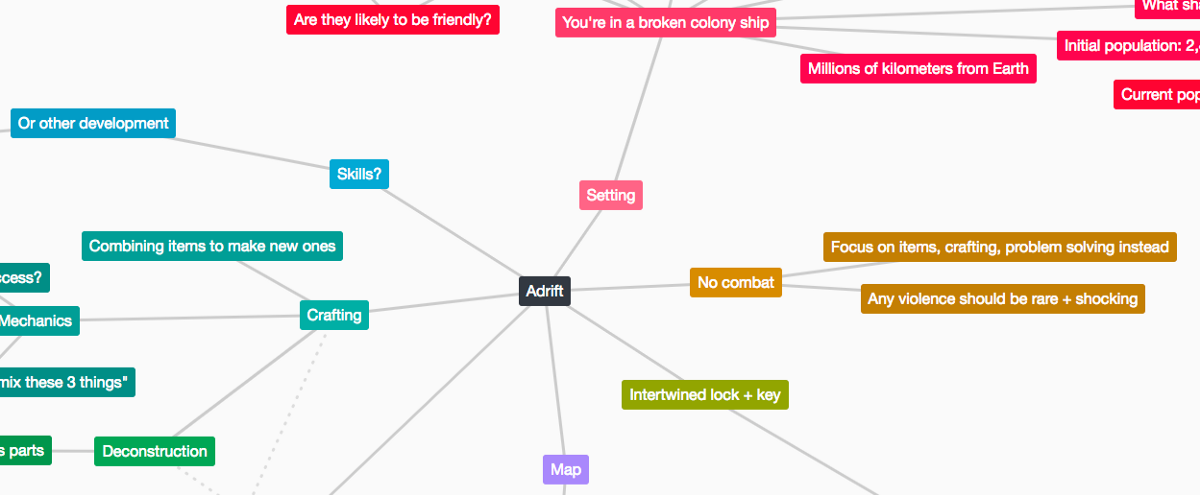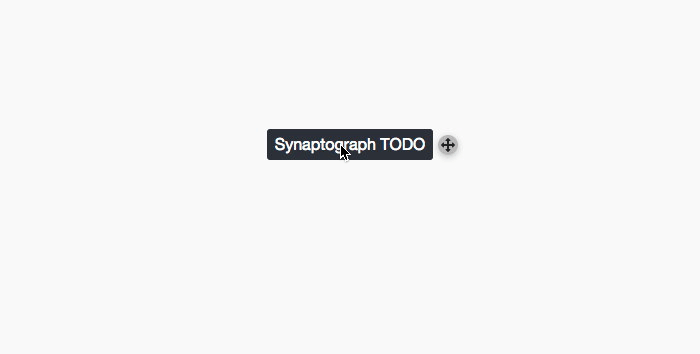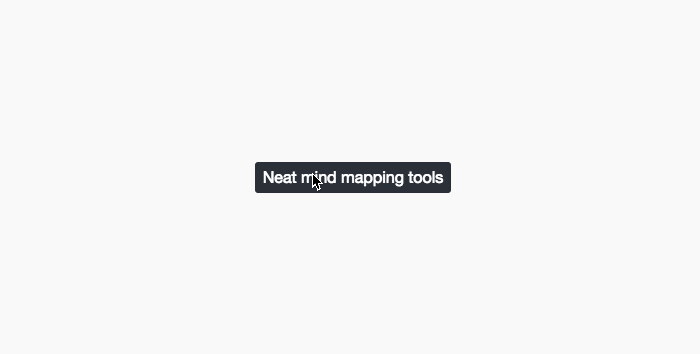(And some other stuff.)
A year and a half ago I started working on a mind mapping tool called Synaptograph, heavily inspired by the wonderful Exobrain, but quickly ran out of steam. This week, with joy, I picked it up again.
I keep notes of various kinds in about five different places right now. I write things on paper, I jot things down on my phone in Notes.app, I save articles I want to keep in Pinboard, I save papers and images in Dropbox, and I have more than a few NOTES.md files lying around in my code repositories. And lately, I’ve been using Synaptograph to sketch out and explore new ideas. So that makes six places that I might have put something I wanted to remember.

Each of those six tools has its own advantages and disadvantages, but none really matches well with how my brain seems to want to arrange information. Paper gets lost, or isn’t at hand when I need it. Pinboard is an abyss, as are Dropbox folders full of papers. I forget that NOTES.md exists. Notes.app is very linear.
I want Synaptograph to be a tool that meshes really well with the way I think, that lets me feel like I transferred part of my mind into an external medium. I want to be able to capture all the different things I’m thinking about when I’m working on something, whether it’s something I need to remember to do, or an article I think might be relevant later and my notes on why, or a group of half-formed thoughts about a possible future direction, or a few paragraphs of explanation of how something could work.
It’s not quite there yet, but this week I added two small features that move Synaptograph a little way in that direction.
The first is checkboxes. I use these on paper all the time, and having them in Synaptograph means that for simple things that don’t need much in the way of sequencing, I can just put them directly into the mind map. To add a checkbox to a node, just write “[ ]” at the beginning of the text. It will automatically turn into a checkbox as soon as you press enter.

I’ve been using these a lot for tracking what I want to get done in Synaptograph itself, and it’s been working great for that purpose. One thing I really like is having to-do items in a free-flowing two-dimensional layout, rather than a list. For personal projects I work on, there’s very rarely a total ordering on tasks that need doing. A list forces you to choose what comes before what else. When you lay things out in two dimensions, it’s much harder to put in fake ordering when there isn’t any.
The second feature I added this week is links. Synaptograph now recognizes URLs, and will properly turn them into links, shortening them if necessary to keep the node text from stomping all over the map. Clicking on the icon next to the link takes you to the linked page, and clicking on the text lets you edit the URL (just like any other node).

There’s a bunch more stuff I want to add, but these two small features are a good start towards making Synaptograph work more like my brain does.
